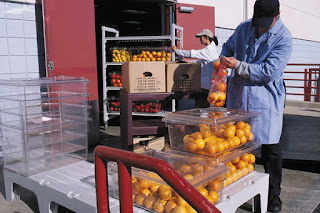Protecting Food Safety from the Point of
Receiving
September is National Food Safety Month, so
we’re going to kick it off by taking a closer look at safe receiving practices.
Our food is well traveled. From field to kitchen, with so many moving parts and
points along the supply chain, food is vulnerable all the way to the table.
Most foodborne illnesses are caused by one of the
following three things: time and temperature abuse, poor personal hygiene, or
cross-contamination. For any foodservice operator, unless you’re harvesting
from your own garden, protecting against these potential hazards begins at the
point of receiving.



Service carts such as Cambro's Service Cart Pro and KD Cart or mobile Camshelving units with antimicrobial shelf plates ramp
up capacity to reduce the number of trips needed to transport food boxes from
receiving to the walk-in cooler. Clear food boxes have an added benefit of
content visibility, which helps employees quickly and safely find what they’re
looking for without opening the box or reaching inside. Solid covers prevent
cross-contamination in storage, while sliding lids are ideal for items that
require frequent access.
If concerns
about food safety in receiving or any other part of your operation are keeping you
up at night, contact us. We can help.







Comments
Post a Comment